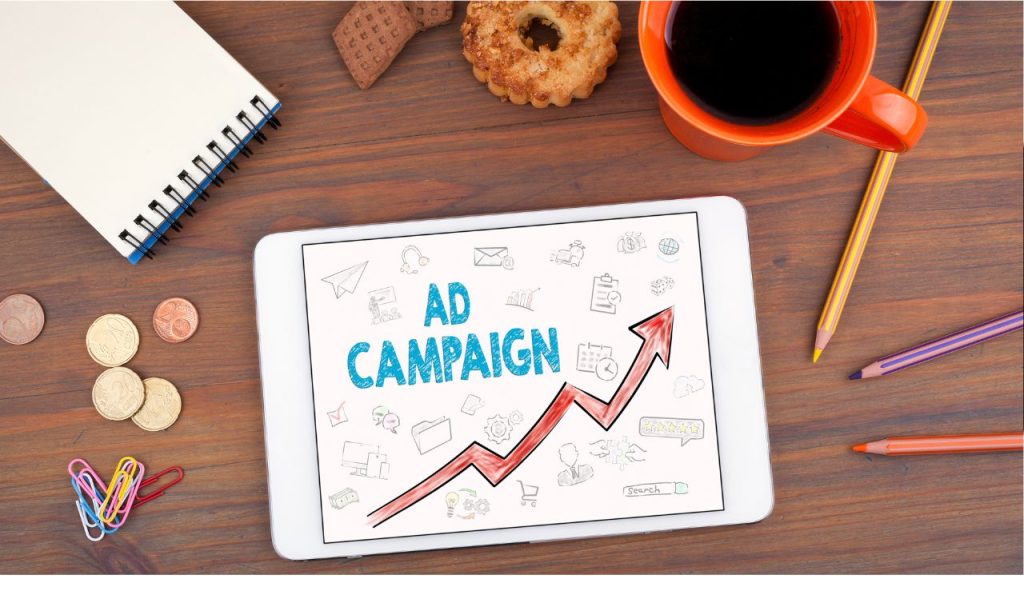Are you struggling to get the results you want from your Google Ads campaigns? You’re not alone. Many businesses pump money into their ads without seeing the return they expect. I’ve been there too.
The problem isn’t always your product or service. Often, it’s how you’re setting up and managing your campaigns. After helping hundreds of companies optimize their Google Ads, I’ve discovered that minor tweaks can lead to massive improvements.
In this guide, I share the most effective tips to boost your Google Ads performance. These aren’t just theoretical ideas—they’re practical strategies I’ve personally used to help businesses increase clicks, conversions, and ROI.
Let’s dive into these game-changing tactics that will transform your Google Ads results.
Get Rid of Vanity Metrics
Impressions, clicks, and even click-through rates can be misleading if they don’t translate to tangible business outcomes.
You should care about conversions and return on ad spend (ROAS). These metrics tell you if your campaigns are making money. I’ve seen companies celebrate high click volumes while their conversion rates tanked. That’s like celebrating a packed store where nobody buys anything.
Start by identifying what actions truly matter for your business. Is it purchases? Form submissions? Phone calls? Then, proper conversion tracking will be set up to measure these valuable actions. Google Ads lets you track various conversion types, so take advantage of this feature.
Remember, a campaign with fewer clicks but higher conversion rates is almost always more valuable than one with tons of clicks but minimal conversions. Quality beats quantity whenever it comes to traffic.
Use Negative Keywords

These prevent your ads from appearing for irrelevant searches, saving money and improving your campaign’s focus.
I audited a client’s account last year and found they were wasting nearly 40% of their budget on searches that had zero chance of converting. Their solar panel installation ads appeared for people searching “solar system planets” and “solar eclipse glasses.” We immediately improved their campaign efficiency by adding these terms as negative keywords.
To find negative keywords, regularly check your Search Terms report. Look for terms that triggered your ads but aren’t relevant to your business. Also, think proactively about terms similar to your keywords but indicate different search intent.
Creating a master negative keyword list at the account level ensures all your campaigns benefit from this filtering. This simple step can dramatically improve your ad relevance and stop wasting money on the wrong clicks.
Dive into Google Analytics and In-Market Segments.
Google Analytics gives you a treasure trove of data about your website visitors, including how they behave after clicking your ads. This information is gold for optimizing your campaigns.
Connect your Google Analytics account to your Google Ads account to unlock powerful insights. You’ll see which landing pages perform best, how long visitors stay on your site, and which pages have high bounce rates. Use this data to improve your landing pages and ad targeting.
In-market segments are another powerful tool. These are groups of users who are actively researching or considering products or services like yours. By targeting these segments, you’re reaching people ready to buy.
I recently helped a furniture retailer target in-market segments for home furnishings. Compared to their standard demographic targeting, their conversion rate jumped by 65%. The users were already interested in buying furniture—we just needed to get our ads in front of them.
Don’t just guess who your ideal customers are. Let the data from Google Analytics and in-market segments guide your targeting decisions.
Focus on Long-tail Keywords
Long-tail keywords might bring in less traffic but often deliver much higher conversion rates. These are specific, usually longer search phrases that indicate clear user intent.
For example, instead of bidding on “running shoes,” you might target “women’s waterproof trail running shoes size 8.” Someone searching for this specific term knows precisely what they want and is closer to purchasing.
Long-tail keywords typically have less competition, which means lower cost-per-click. I’ve worked with clients who reduced their cost-per-conversion by over 70% by shifting their budget from broad, competitive keywords to more specific long-tail variations.
To find valuable long-tail keywords, look at your search terms report, use Google’s Keyword Planner, or check out what autocomplete suggestions appear when typing your main keywords into Google’s search bar. Tools like Answer the Public can also reveal people’s questions about your products or services.
Build out your keyword list with these specific phrases, and you’ll likely see your conversion rates climb while your costs decrease.
Focus on Targeted Traffic
Refine your audience targeting using demographics, locations, devices, and the time of day your ads appear. If data shows that your conversions are highest among women aged 35-44 in urban areas using mobile devices in the evening, adjust your bidding strategy accordingly.
Geographic targeting is particularly powerful. A local business has no reason to show ads nationwide. Even national companies can benefit from location-based bid adjustments, spending more in high-performing regions and less in underperforming areas.
Device targeting matters, too. If your mobile conversion rate is significantly lower than desktop, you should decrease mobile bids or improve your mobile experience. The same goes for the time of day—why spend the same amount at 3 AM as you do during peak conversion hours?
Focusing your budget on your most valuable audience segments will help you get more from every dollar you spend.
Leverage Assets
Ad assets (formerly known as ad extensions) are like free real estate in Google’s search results. They make your ads more prominent and provide additional information that can improve click-through rates.
Sitelink assets add extra links to specific pages on your site. Callout assets highlight special offers or unique selling points. Location assets show your address and can help drive foot traffic to physical stores.
One client added callout assets highlighting their “Free 2-Day Shipping” and “30-Day Returns” policies and saw their CTR increase by 25%. These simple additions gave potential customers more reasons to click.
Don’t stop with just one or two assets. Use all relevant options for your business. The more helpful information you can provide in your ad, the better your performance will be. Google rewards ads with well-implemented assets by giving them more visibility and potentially lower costs.
Remember to make each asset unique and valuable. Generic additions won’t help much, but specific, compelling information can significantly boost your results.
Look at the Finer Details
Check your campaign settings regularly. Are you using the right bidding strategy for your goals? Have you set appropriate ad schedules? Are your location targets accurate?
Landing page experience is crucial, too. A fast, mobile-friendly page that delivers exactly what your ad promised will convert far better than a generic homepage. I’ve seen conversion rates double simply by creating dedicated landing pages that align perfectly with specific ad groups.
Test different ad variations continuously. Even small changes to headlines or descriptions can have surprising impacts on performance. One e-commerce client rotated in a headline that included their discount percentage, and their conversion rate jumped by 32%.
Don’t forget about ad rotation settings. If you’re testing new ads, ensure you’re not using “Optimize” immediately, as this setting might not give new variations enough exposure to gather reliable data.
These details might seem minor, but they can make or break your campaign’s success.
Take Advantage of Specialized Platforms
Google Ads is powerful, but combining it with specialized platforms can take your analysis and optimization to new heights.
Looker Studio (formerly Google Data Studio) lets you create custom dashboards that pull data from multiple sources. This gives you a more complete picture of your marketing funnel, from ad impressions to customer lifetime value.
A client in the finance sector used Looker Studio to discover that while their cost per lead from specific keywords was higher, the average deal size from those leads was three times larger. This insight allowed them to adjust bids accordingly and focus on total revenue rather than lead cost.
Third-party tools for bid management, A/B testing, and competitive analysis can also provide an edge. Some offer automated alerts for sudden performance changes or opportunities you might miss.
Even Google Sheets can become a powerful ally with the correct formulas and add-ons. I use it to create custom reports that compare performance across periods or visualize trends that the standard interface doesn’t show clearly.
Don’t limit yourself to the standard Google Ads interface. Explore specialized platforms that can give you deeper insights and more control over your campaigns.
Revisit ad Quality

Your Quality Score affects your ad positions and how much you pay per click. Improving it is one of the most effective ways to boost performance while lowering costs.
The Quality Score is based on the expected click-through rate, ad relevance, and landing page experience. To see the best results, work on all three.
Structure your account with tightly themed ad groups. Each ad group should contain keywords closely related to each other and the ads they trigger. This improves relevance and makes it easier to write particular ad copy.
Regarding ad copy, ensure your keywords appear in your headlines and descriptions. When appropriate, use dynamic keyword insertion to automatically include the user’s search term in your ad.
For landing pages, ensure they load quickly and contain content related to the ad and the keyword. Include your keywords naturally in the page copy, headings, and metadata.
One retail client increased their Quality Score from 4 to 8 by restructuring their account and creating dedicated landing pages for each product category. Their cost per click dropped by 31%, allowing them to get substantially more traffic on the same budget.
Regular account maintenance is essential for keeping Quality Scores high. Even well-optimized accounts can drift as products, competitors, and search behaviors change.
ALSO READ: Why Is a Good Customer Journey the Best Marketing Strategy?
FAQs
The average CTR for search ads across all industries is about 2%. However, a “good” CTR varies by industry. Focus on improving your CTR over time rather than comparing it to a fixed benchmark.
For active campaigns, check at least weekly. Make major adjustments less frequently—typically monthly—to allow enough data to accumulate.
It depends on your goals and data volume. Automated strategies like Target CPA work well when you have sufficient conversion data, while manual bidding gives you more control with limited data or specialized campaigns.
Improve your Quality Score, refine your targeting, use negative keywords, focus on long-tail keywords, and continuously test ad variations to lower costs while maintaining or improving results.
The metric that most directly relates to your business goals. For most companies, this is the cost per conversion or return on ad spend (ROAS), not clicks or impressions.




